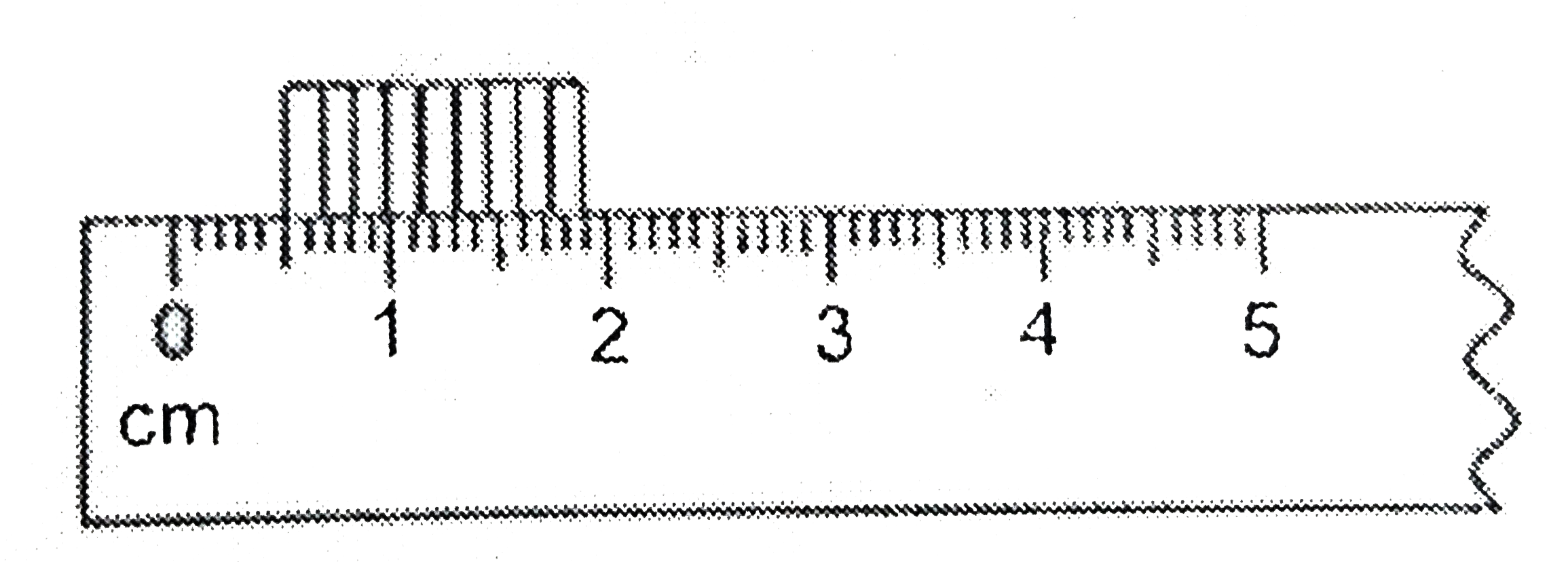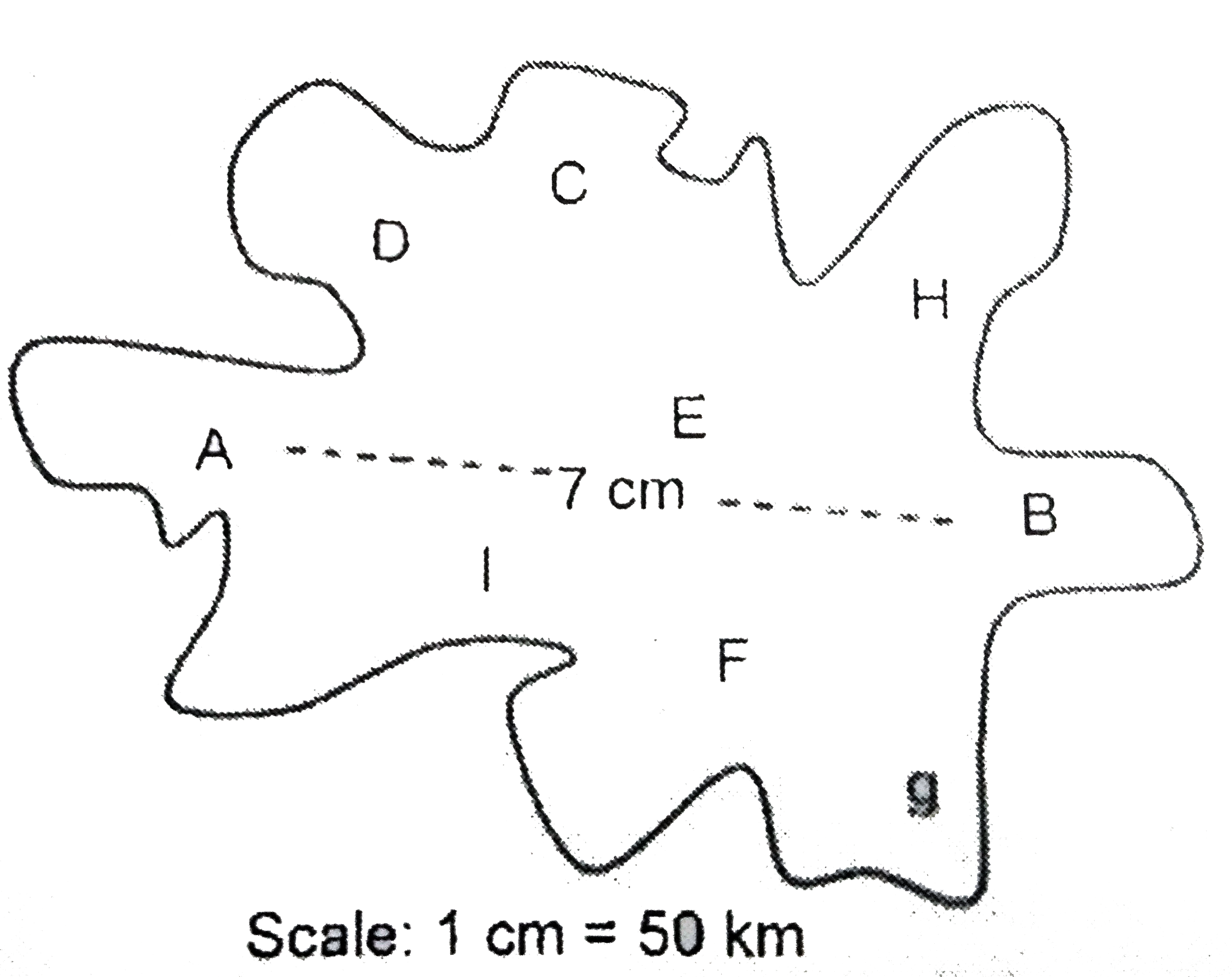Complete Solutions to Very Short Answer Type Question (MCQs) of chapter MEASUREMENTS of Class 7 book with complete answers and questions
| Class 7 | PHYSICS |
| Chapter | MEASUREMENTS |
| PEARSON IIT JEE FOUNDATION | Very Short Answer Type Question (MCQs) |
| Number Of Questions | 38 |
| Academic Year | 2023-24 |
The smallest measurement that can be measure by using a wall clock is _____.
01:46View SolutionThe length and breadth of a rectangle are 2 m and 5m, respectively, the area of the reactangle is______.
03:05View SolutionIf the density of a substance is `2xx10^(3)kg" "m^(-3)`, then the mass of 5 `m^(3)` of this substances is
01:45View SolutionThe mass of a body of weight 200 gf is _____g.
01:30View SolutionA pile of identical one rupee coins are placed over a metre scale as shown in the figure. The thickness of a one rupee coin is_____
 02:33View Solution
02:33View Solution5 litre of a liquid weighs 5kgf. The density of liquid is_____.
02:04View Solution1 kilogram is equal to _____.
View SolutionMass is measured by using a______.
01:56View Solution1 kg `m^(-3)`=_____.
02:08View SolutionThe distance between two cities A ad B in a map is 7.5 cm. the scale taken for drawing this map is 1cm=1,50,000m. The actual distance between A and B is____km.
02:14View Solution1 m`^(3)=`_____litre.
02:01View SolutionThe whole length of a metre scale is divided into 500 equal parts then the smallest measurement that can be measured by using the scale is `"_______"`.
03:15View SolutionWhich among the following is (are) the units(s) of pressure?
02:46View SolutionWhich of the following statements is /are correct?
View SolutionVolume of an irregular shaped solid can be measured by using a____
03:23View SolutionWhich of the following statements is incorrect?
02:09View SolutionAn atlas of a country is shown in the figure, the distance between cities A and B is______
 01:38View Solution
01:38View SolutionArrange the following steps in a sequence of find the vlume oof an irregular shaped solid body.
(A). The irregular shaped solid is tied with the thread and is lowered into the measuring cylinder.
(B). A measuring cylinder with graduations in millilitre or cubic centimetrer is taken.
(C). The level of water in the measuring cylinder rises after immersion of the solid. (say `V_(2)`)
(D) First, it is filled with water to a certain level of volume. (say `V_(1)`)
(E). The volume of the stone is equal to the difference between the volume of the water before and after the immersion of the stone. `(V_(2)-V_(1))`.04:59View SolutionDensity of the material of a paper is given a 0.5 g `cm^(-3)`. The mass of the paper is 1 g and its length and breadth are 10 c and 5 cm, respectively. Arrange the following steps in a sequence to find the thickness of the paper.
(A). The 0thickness of the paper is `("Volume of the paper (m)")/("Vlume of the paper (V)")`
(B) The density (d) of the material of the paper is `=("Mass of the paper (m)")/("volume of the paper (V)")`
(C). then the volume (V) o the paper
`=("Mass of the paper (m)")/("Density (d) of the paper")`
(D). The volume (V) of the paper is=length`xx`breadth`xx`thickness of the paper.04:10View SolutionThe smallest measurement that can be measure by using a wall clock is _____.
01:46View SolutionThe length and breadth of a rectangle are 2 m and 5m, respectively, the area of the reactangle is______.
03:05View SolutionIf the density of a substance is `2xx10^(3)kg" "m^(-3)`, then the mass of 5 `m^(3)` of this substances is
01:45View SolutionThe mass of a body of weight 200 gf is _____g.
01:19View SolutionA pile of identical one rupee coins are placed over a metre scale as shown in the figure. The thickness of a one rupee coin is_____
 02:33View Solution
02:33View Solution5 litre of a liquid weights 5kg. The density of liquid is_____.
02:04View Solution1 kilogram is equal to _____.
02:46View SolutionMass is measured by using a______.
01:56View Solution1 kg `m^(-3)`=_____.
02:08View SolutionThe distance between two cities A ad B in a map is 7.5 cm. the scale taken for drawing this map is 1cm=1,50,000m. The actual distance between A and B is____km.
02:14View Solution1 m`^(3)=`_____litre.
02:01View SolutionThe whole length of a metre scale is divided into 500 equal parts then the smallest measurement that can be measured by using the scale is `"_______"`.
03:15View SolutionWhich among the following is (are) the units(s) of pressure?
02:46View SolutionWhich of the following statements is /are correct?
03:01View SolutionVolume of an irregular shaped solid can be measured by using a____
03:23View SolutionWhich of the following statements is incorrect?
02:57View SolutionAn atlas of a country is shown in the figure, the distance between cities A and B is______
 01:38View Solution
01:38View SolutionArrange the following steps in a sequence of find the vlume oof an irregular shaped solid body.
(A). The irregular shaped solid is tied with the thread and is lowered into the measuring cylinder.
(B). A measuring cylinder with graduations in millilitre or cubic centimetrer is taken.
(C). The level of water in the measuring cylinder rises after immersion of the solid. (say `V_(2)`)
(D) First, it is filled with water to a certain level or volume. (say `V_(1)`)
(E). The volume of the stone is equal to the difference between the volume of the water before and after the immersion of the stone. `(V_(2)-V_(1))`.04:59View SolutionDensity of the material of a paper is given a 0.5 g `cm^(-3)`. The mass of the paper is 1 g and its length and breadth are 10 c and 5 cm, respectively. Arrange the following steps in a sequence to find the thickness of the paper.
(A). The 0thickness of the paper is `("Volume of the paper (m)")/("Vlume of the paper (V)")`
(B) The density (d) of the material of the paper is `=("Mass of the paper (m)")/("volume of the paper (V)")`
(C). then the volume (V) o the paper
`=("Mass of the paper (m)")/("Density (d) of the paper")`
(D). The volume (V) of the paper is=length`xx`breadth`xx`thickness of the paper.04:10View Solution
Very Short Answer Type Question (MCQs) questions and complete solutions for chapter MEASUREMENTS of PEARSON IIT JEE FOUNDATION of Class 7
All Exercises from PEARSON IIT JEE FOUNDATION Class 7 PHYSICS MEASUREMENTS
- Answer The following Question
- Assessment Test (Test 1)
- Assessment Test (Test 2)
- Concept Application (LEVEL 1) (Fill in the blanks)
- Concept Application (LEVEL 1)
- Concept Application (LEVEL 1) (M.C.Q.)
- Concept Application (LEVEL 1) (Match the Column)
- Concept Application (LEVEL 2)
- Concept Application (LEVEL 3)
- Essay Type Question
- Level 1 (Fill in the blanks)
- Level 1 (MCQs)
- Level 1 (True False)
- Level 2 (MCQs)
- Level 3
- Match the Column
- Short Answer Type Question
- Test 1
- Test 2
- Test Your Concepts (Essay Type Questions)
- Test Your Concepts (Short Answer Type Questions)
- Test Your Concepts (Very Short Answer Type Questions (Match the column))
- Test Your Concepts (Very Short Answer Type Questions)
- Test Your Concepts (Very Short Answer Type Questions) (Fill in the blanks))
- Test Your Concepts (Very Short Answer Type Questions) (M.C.Q)
- Very Short Answer Type Question (Fill in the Blanks)
- Very Short Answer Type Question (MCQs)
